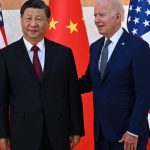Editor’s Note: Sign up for CNN’s Meanwhile in China newsletter, which explores what you need to know about the country’s rise and how it impacts the world.
China has reported a surge in tourism during the just concluded Labor Day holiday, but travelers cut back on their spending, in a sign that consumption in world’s second largest economy remains sluggish.
Tourists made a total of 295 million trips within mainland China during the five-day-long holiday, which ended on Sunday, the Ministry of Culture and Tourism said on Monday.
That was 28% more than the number of trips taken during the Labor Day holiday period in 2019, which lasted only four days. Months later, in 2020, the Covid-19 pandemic would strike China and the world, largely shutting down travel.
This year’s Labor Day tourism revenue was 166.89 billion yuan ($23.6 billion), only 13.5% higher than the 2019 level.
That means tourists were spending less money per trip compared to five years ago, as their average spending dropped 6% to 565.73 yuan ($80).
There was a similar pattern at China’s box office.
During the holiday period, 37.77 million people went to the cinema, exceeding 2019’s 35.09 million.
But ticket sales were about the same as 2019 levels, reaching 1.527 billion yuan ($215.7 million).
Chinese consumers have curtailed spending as the economy weakens and job prospects worsen. A record downturn in real estate, which accounts for 70% of household wealth, is weighing on consumer sentiment.
“[Chinese] consumer sentiment appears shaky judging by the sluggish retail sales spending momentum and the sharp reversal in the April services PMI,” analysts from TD Securities said in a recent research note.
On Monday, a private sector survey showed that the Caixin/S&P Global services PMI fell to 52.5 in April from 52.7 in the previous month.
The services sub-index under the government’s official non-manufacturing PMI also dropped sharply to 50.3 in April from 52.4 in March, according to statistics released by the National Bureau of Statistics last week. It was the weakest reading since January.
In March, retail sales growth slowed to 3.1% from 5.5% in February. Consumer inflation increased by a muted 0.1% in March from a year earlier, down from 0.7% in February, which was the first increase in six months.
Read the full article here




